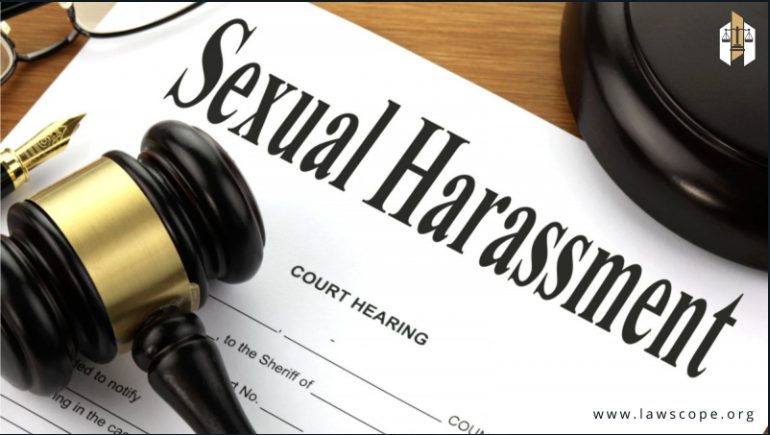
Sexual harassment is a pervasive issue in workplaces around the world. However, for members of the LGBTQ+ community, the risk of experiencing sexual harassment is even greater. Studies show that LGBTQ+ employees are more likely to experience sexual harassment than their heterosexual and cisgender counterparts. This is due in part to the fact that LGBTQ+ individuals are often seen as easy targets for discrimination and harassment. As a sexual harassment lawyer, it is important to understand the unique challenges faced by LGBTQ+ employees and to have strategies in place to protect them from sexual harassment.
In this article, we will provide a guide for lawyers and employers on how to protect LGBTQ+ employees from sexual harassment in the workplace.
Understanding The Unique Challenges Faced by LGBTQ+ Employees
Before we can begin to address the issue of sexual harassment among LGBTQ+ employees, it is important to understand the unique challenges they face in the workplace. Some of the challenges include:
1. Lack of Legal Protection
While there have been significant legal advances in recent years, LGBTQ+ individuals still face discrimination in many areas of their lives, including in the workplace. Currently, there is no federal law that explicitly prohibits discrimination based on sexual orientation or gender identity.
While some states and municipalities have passed laws protecting LGBTQ+ employees from discrimination, many do not have such protections in place. This lack of legal protection can leave LGBTQ+ employees vulnerable to harassment and discrimination in the workplace.
2. Stereotyping
LGBTQ+ employees are often subjected to harmful stereotypes and assumptions about their sexual orientation or gender identity. This can include assumptions about their sexual behavior, gender expression, and other aspects of their identity.
These stereotypes can lead to harassment and discrimination in the workplace, as well as negative performance evaluations, missed promotions, and other career setbacks.
3. Harassment from Coworkers and Supervisors
LGBTQ+ employees are at risk of harassment from both their coworkers and their supervisors. This can include verbal harassment, physical harassment, and unwanted sexual advances. Harassment from coworkers can create a hostile work environment, while harassment from supervisors can make it difficult for employees to report the harassment and seek help.
Protecting LGBTQ+ Employees from Sexual Harassment
There are several strategies that lawyers and employers can use to protect LGBTQ+ employees from sexual harassment in the workplace. These strategies include:
1. Implementing a Strong Anti-Harassment Policy
The first step in protecting LGBTQ+ employees from sexual harassment is to implement a strong anti-harassment policy. This policy should explicitly prohibit harassment based on sexual orientation or gender identity and should provide a clear process for reporting harassment.
It should also outline the consequences for violating the policy, which may include disciplinary action, termination, or legal action.
2. Providing Employee Training
Employee training is a crucial component of any anti-harassment policy. All employees should receive training on what constitutes sexual harassment, how to report harassment, and the consequences of engaging in harassment. LGBTQ+ employees should receive additional training on their rights under the policy and how to report harassment related to their sexual orientation or gender identity.
3. Creating a Supportive Work Environment
Employers should strive to create a supportive work environment for LGBTQ+ employees. This can include providing resources and support groups for LGBTQ+ employees, promoting LGBTQ+ visibility within the workplace, and celebrating LGBTQ+ holidays and events.
By creating a supportive work environment, employers can help to mitigate the negative effects of discrimination and harassment.
4. Responding Quickly to Reports of Harassment
Employers must respond quickly and effectively to reports of harassment. This includes conducting a thorough investigation into the allegations, providing support to the victim, and taking appropriate disciplinary action against the harasser. It is important to document all actions taken in response to the report to ensure accountability and to prevent future incidents of harassment.
5. Offering Confidential Reporting
Many LGBTQ+ employees may feel uncomfortable reporting incidents of harassment to their supervisors or HR department. Therefore, employers need to offer confidential reporting options, such as a hotline or third-party reporting system. This can help to ensure that victims feel safe and comfortable reporting incidents of harassment.
6. Working with LGBTQ+ Organizations
Employers can also partner with LGBTQ+ organizations to promote inclusion and diversity in the workplace. These organizations can provide valuable resources and training to employers and employees on how to create an inclusive work environment for LGBTQ+ individuals. By working with LGBTQ+ organizations, employers can also demonstrate their commitment to diversity and inclusion.
7. Monitoring the Workplace for Harassment
Finally, employers should regularly monitor the workplace for signs of harassment. This can include conducting anonymous surveys or focus groups to assess employee experiences, as well as regularly reviewing employee complaints and reports.
By proactively monitoring the workplace for harassment, employers can identify potential issues before they become major problems.
How a Sexual Harassment Lawyer Can Help Protect the Rights of LGBTQ+ Employees in the Workplace
While employers can take steps to protect LGBTQ+ employees from harassment, there may be times when legal action is necessary to ensure that their rights are protected. In such cases, sexual harassment lawyers can help LGBTQ+ employees navigate the legal system and advocate for their rights.
Here are some ways that a sexual harassment lawyer can help protect the rights of LGBTQ+ employees in the workplace:
1. Providing Legal Advice and Guidance
A sexual harassment lawyer can provide LGBTQ+ employees with legal advice and guidance on their rights under the law. They can help employees understand what constitutes sexual harassment and discrimination, and what legal remedies may be available to them if they are subjected to harassment or discrimination in the workplace.
2. Filing Complaints with Government Agencies
If an LGBTQ+ employee has been subjected to harassment or discrimination in the workplace, a sexual harassment lawyer can help them file a complaint with government agencies such as the Equal Employment Opportunity Commission (EEOC).
The EEOC is responsible for enforcing federal laws that prohibit workplace discrimination based on race, color, religion, sex, national origin, age, and disability. The EEOC can investigate the complaint and may take legal action on behalf of the employee if necessary.
3. Filing Lawsuits Against Employers
If an LGBTQ+ employee has been subjected to harassment or discrimination in the workplace and the employer has not taken appropriate action to address the situation, a sexual harassment lawyer can help the employee file a lawsuit against the employer.
The lawyer can help the employee gather evidence, draft legal documents, and represent them in court. If the lawsuit is successful, the employee may be awarded damages for lost wages, emotional distress, and other losses.
4. Negotiating Settlements
In some cases, it may be possible to negotiate a settlement with the employer instead of filing a lawsuit. A sexual harassment lawyer can help the employee negotiate a settlement that provides compensation for any losses suffered as a result of harassment or discrimination.
The lawyer can also ensure that the settlement agreement includes provisions to prevent future harassment or discrimination.
Related Content: LGBT Rights In The United States: Everything You Must Know
Conclusion
Sexual harassment and discrimination in the workplace can have a devastating impact on LGBTQ+ employees. As a sexual harassment lawyer, you can help protect the rights of LGBTQ+ employees by providing legal advice and guidance, filing complaints with government agencies, filing lawsuits against employers, and negotiating settlements.
By advocating for the rights of LGBTQ+ employees, you can help to create a workplace that is safe and inclusive for all employees, regardless of their sexual orientation or gender identity.
You May Like Also:



6 thoughts on “Protecting LGBTQ+ Employees From Sexual Harassment: A Guide For Lawyers and Employers”